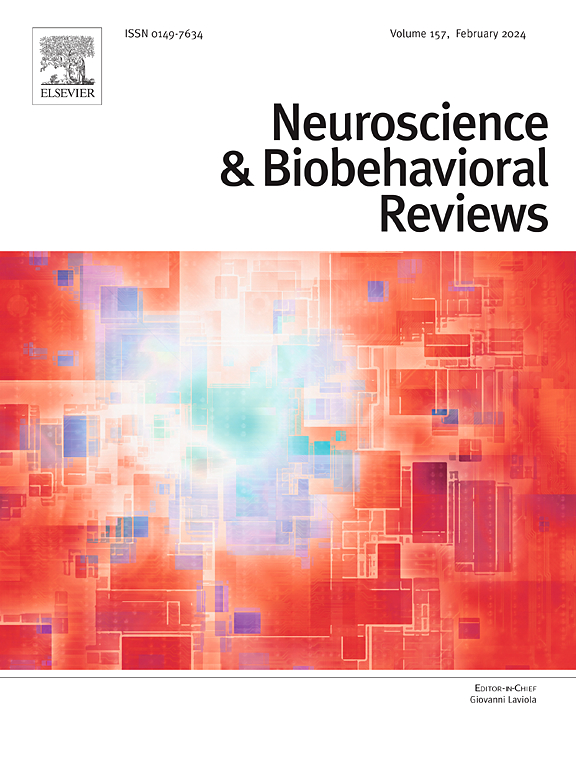有意义不及物手势的神经基础:损伤和功能磁共振研究的荟萃分析。
IF 7.9
1区 医学
Q1 BEHAVIORAL SCIENCES
引用次数: 0
摘要
长期以来,临床医生和研究人员一直使用有意义的不及物(MFI)手势来评估手势的产生和识别,特别是在失用症等神经心理障碍的背景下。然而,它们的神经基础仍不清楚。这项系统的、理论驱动的荟萃分析包括6项病变研究和21项功能磁共振成像研究,目的是研究MFI手势的大脑网络。结果表明,MFI手势加工依赖于一个大的、左偏侧的、皮质-皮质下、额-颞-岛和小脑神经网络,该网络也参与社会认知和技能。在内侧和扣带脑区也发现了双侧群集。通常与工具使用和模仿技能有关的左顶叶下叶,是这个手势生成网络的一部分——尽管它没有在统计控制中存活下来。这些结果挑战了传统的神经认知模型,并表明MFI手势虽然在大脑中广泛存在,但需要特定的社会认知过程。讨论提供了MFI手势的神经基础的综合框架,以及方法上的考虑和未来的方向。本文章由计算机程序翻译,如有差异,请以英文原文为准。
The neural bases of meaningful intransitive gestures: A meta-analysis of lesion and fMRI studies
Meaningful intransitive (MFI) gestures have long been used by clinicians and researchers to assess gesture production and recognition, especially in the context of neuropsychological disorders like apraxia. Their neural bases, however, remain unclear. The goal of this systematic, theory-driven meta-analysis of 6 lesion studies and 21 fMRI studies was to investigate the cerebral networks of MFI gestures. The results suggested that MFI gesture processing depends on a large, left-lateralized, cortico-subcortical, fronto-temporo-insular and cerebellar neural network also involved in social cognition and skills. A bilateral cluster was also found in medial and cingulate brain regions. The left inferior parietal lobe, typically involved in tool use and imitation skills, was part of this network for gesture production – although it did not survive statistical control. These results challenge traditional neurocognitive models and suggest that MFI gestures, although represented widely in the brain, call for specific socio-cognitive processes. The discussion offers a comprehensive framework of the neural bases of MFI gestures, along with methodological considerations and future directions.
求助全文
通过发布文献求助,成功后即可免费获取论文全文。
去求助
来源期刊
CiteScore
14.20
自引率
3.70%
发文量
466
审稿时长
6 months
期刊介绍:
The official journal of the International Behavioral Neuroscience Society publishes original and significant review articles that explore the intersection between neuroscience and the study of psychological processes and behavior. The journal also welcomes articles that primarily focus on psychological processes and behavior, as long as they have relevance to one or more areas of neuroscience.

 求助内容:
求助内容: 应助结果提醒方式:
应助结果提醒方式:


